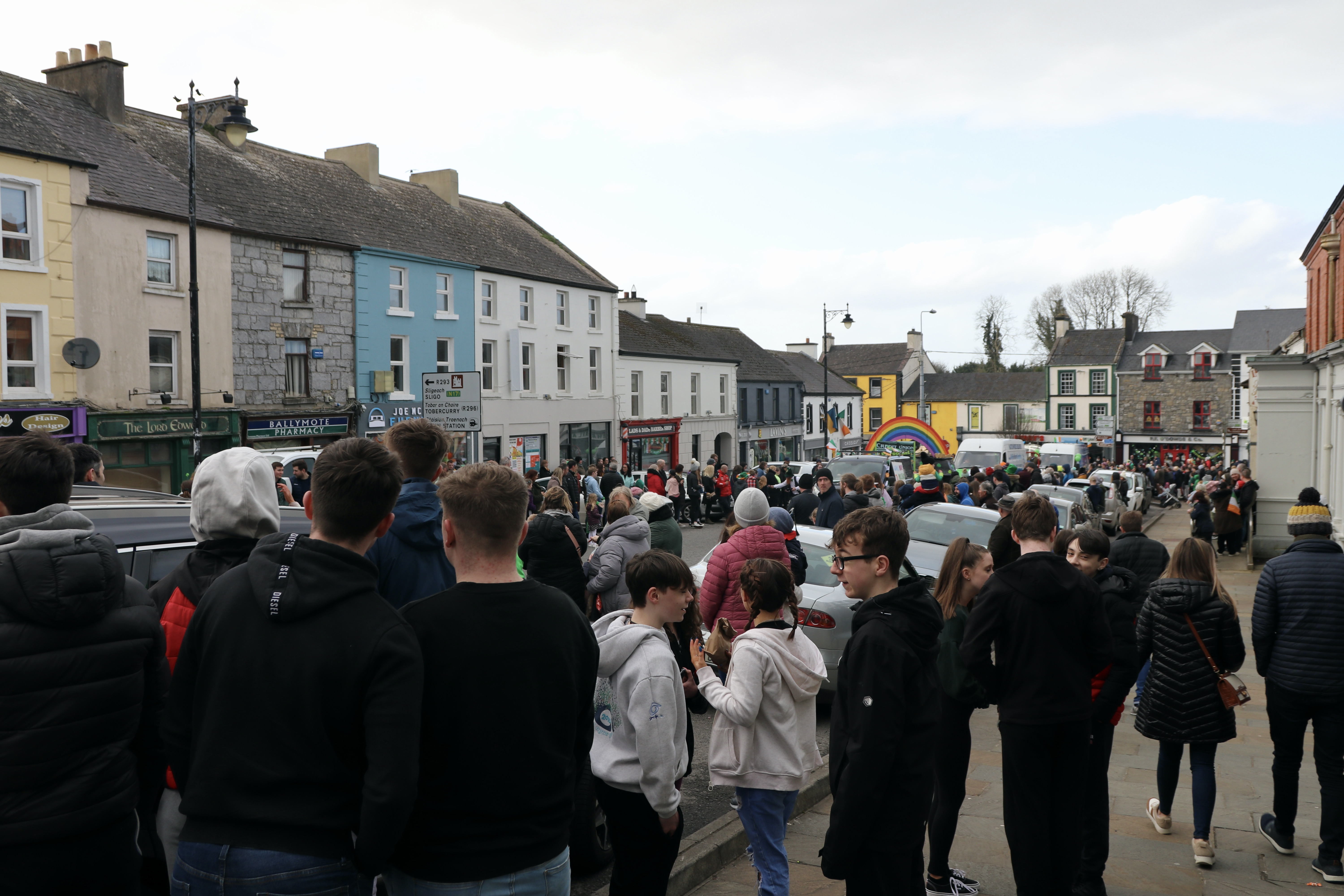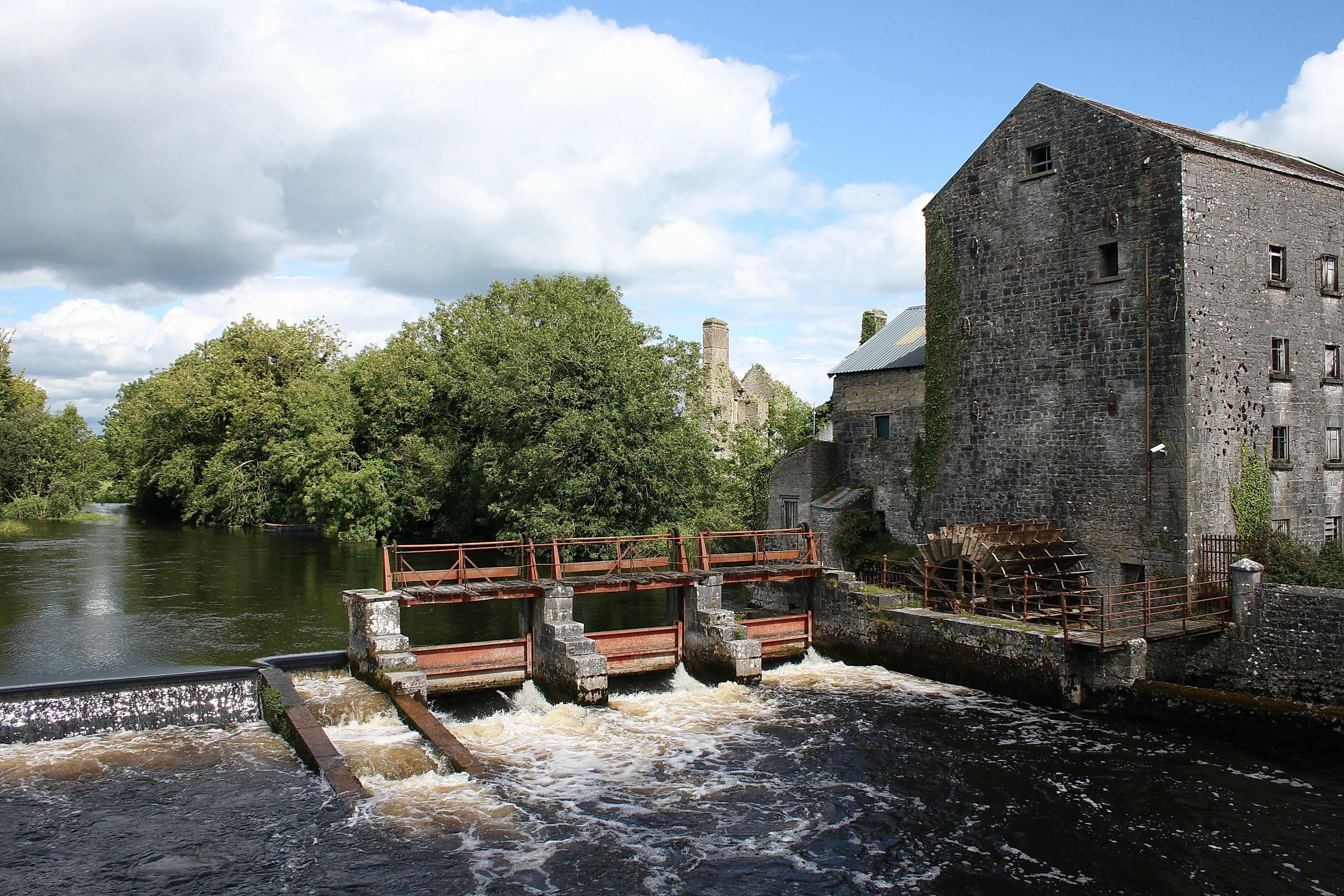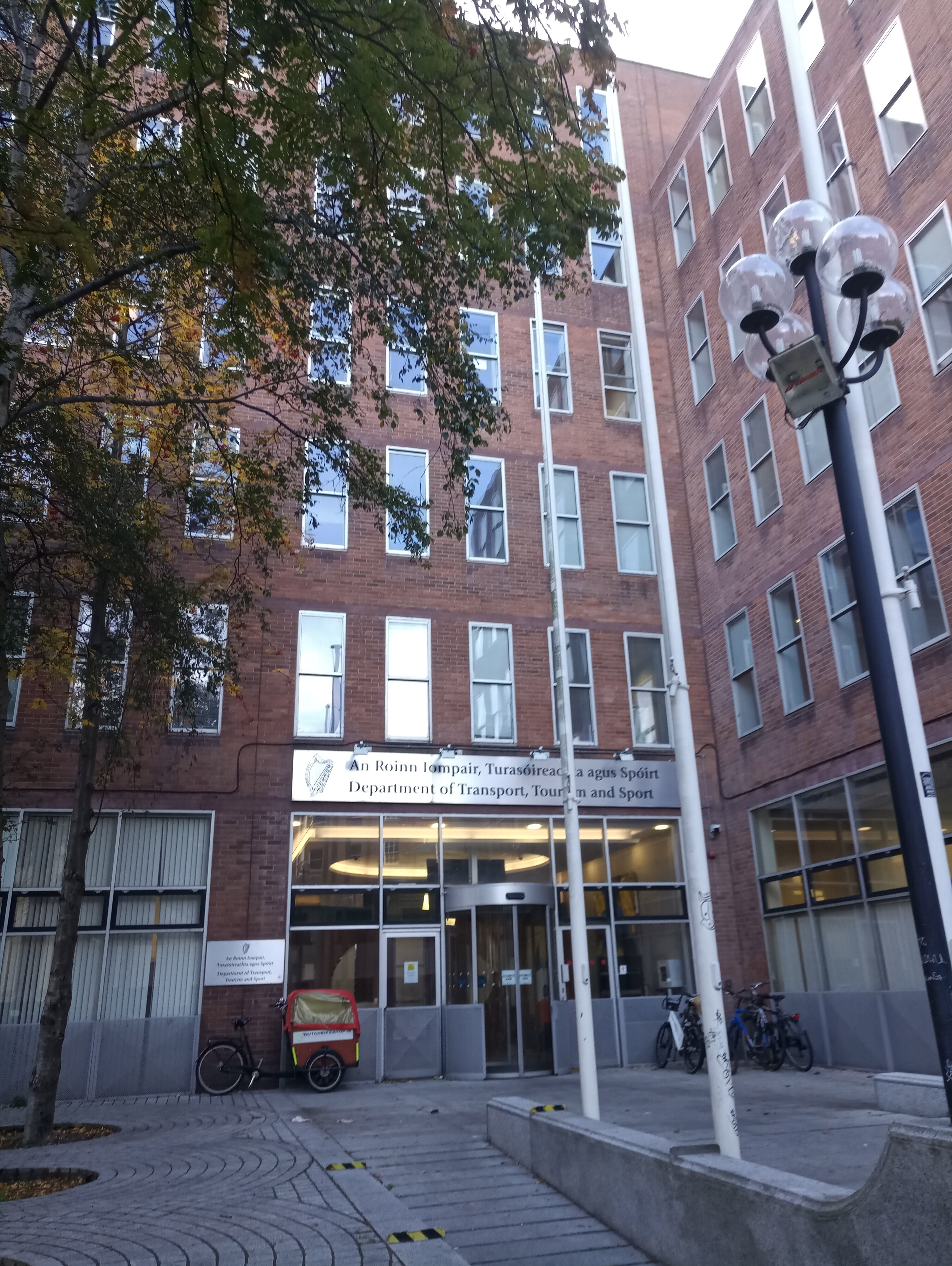|
R295 Road
The R295 road is a Regional road (Ireland), regional road in Republic of Ireland, Ireland that runs from Ballymote, County Sligo to Boyle, County Roscommon, Boyle, County Roscommon. From Ballymote the road passes by Feenagh lough and of past the Caves of Kesh. It continues by ascending over the Curlew Mountains before descending into Boyle from the west. See also *Roads in Ireland *National primary road *National secondary road ReferencesRoads Act 1993 (Classification of Regional Roads) Order 2006 – Department of Transport, Tourism and Sport, Department of Transport Regional roads in the Republic of Ireland Roads in County Sligo Roads in County Roscommon {{Ireland-road-stub ... [...More Info...] [...Related Items...] OR: [Wikipedia] [Google] [Baidu] |
Regional Road (Ireland)
A regional road ( ga, bóthar réigiúnach) in the Republic of Ireland is a class of road not forming a major route (such as a national primary road or national secondary road), but nevertheless forming a link in the Roads in Ireland, national route network. There are over 11,600 kilometres (7,200 miles) of regional roads. Regional roads are numbered with three-digit route numbers, prefixed by "R" (e.g. R105). The equivalent road category in Northern Ireland are Roads in Northern Ireland#"B" roads, B roads. History Until 1977, classified roads in the Republic of Ireland were designated with one of two prefixes: Trunk Roads in Ireland, "T" for Trunk Roads and "L" for Link Roads. ThLocal Government (Roads and Motorways) Act authorised the designation of roads as National roads: in 1977, twenty-five National Primary roads (N1-N25) and thirty-three National Secondary roads (N51-N83) were initially designated unde Many of the remaining classified roads became Regional roads (formally ... [...More Info...] [...Related Items...] OR: [Wikipedia] [Google] [Baidu] |
Republic Of Ireland
Ireland ( ga, Éire ), also known as the Republic of Ireland (), is a country in north-western Europe consisting of 26 of the 32 counties of the island of Ireland. The capital and largest city is Dublin, on the eastern side of the island. Around 2.1 million of the country's population of 5.13 million people resides in the Greater Dublin Area. The sovereign state shares its only land border with Northern Ireland, which is part of the United Kingdom. It is otherwise surrounded by the Atlantic Ocean, with the Celtic Sea to the south, St George's Channel to the south-east, and the Irish Sea to the east. It is a unitary, parliamentary republic. The legislature, the , consists of a lower house, ; an upper house, ; and an elected President () who serves as the largely ceremonial head of state, but with some important powers and duties. The head of government is the (Prime Minister, literally 'Chief', a title not used in English), who is elected by the Dáil and appointed by ... [...More Info...] [...Related Items...] OR: [Wikipedia] [Google] [Baidu] |
Ballymote
Ballymote () is a market town in southern County Sligo, approx. 24 km south east of Sligo town in the province of Connacht, which is located in the north-west of Ireland. Ballymote lies in the barony of Corran. A commuter town with a strong history of independent enterprises along with firm local health, school, and transport services. It is located on the main Dublin to Sligo Train Line, and situated 10 minutes from the N4 / N17 Roadways. Ballymote serves a large hinterland area in south east County Sligo. The Norman Ballymote Castle dates from the 1300s, and the Book of Ballymote was written in or near the town in the 1390s. History The origins of the settlement appear to have been derived from the 12th century Norman Castle, though evidence of earlier settlement and farming in area from 1000BC exists through the presence of ringforts, cairns, and archaeological remains. Ballymote was much affected by the disruption of the full conquest of Ireland by the English an ... [...More Info...] [...Related Items...] OR: [Wikipedia] [Google] [Baidu] |
County Sligo
County Sligo ( , gle, Contae Shligigh) is a county in Ireland. It is located in the Border Region and is part of the province of Connacht. Sligo is the administrative capital and largest town in the county. Sligo County Council is the local authority for the county. The population of the county was 65,535 at the 2016 census. It is noted for Benbulben Mountain, one of Ireland's most distinctive natural landmarks. History The county was officially formed in 1585 by Sir Henry Sidney, Lord Deputy of Ireland, but did not come into effect until the chaos of the Nine Years' War ended, in 1603. Its boundaries reflect the Ó Conchobhair Sligigh confederation of Lower Connacht ( ga, Íochtar Connacht) as it was at the time of the Elizabethan conquest. This confederation consisted of the tuatha, or territories, of Cairbre Drumcliabh, Tír Fhíacrach Múaidhe, Tír Ollíol, Luíghne, Corann and Cúl ó bhFionn. Under the system of surrender and regrant each tuath was subsequen ... [...More Info...] [...Related Items...] OR: [Wikipedia] [Google] [Baidu] |
Boyle, County Roscommon
Boyle (; ) is a town in County Roscommon, Ireland. It is located at the foot of the Curlew Mountains near Lough Key in the north of the county. Carrowkeel Megalithic Cemetery, the Drumanone Dolmen and the lakes of Lough Arrow and Lough Gara are also close by. , the population of the town was 2,568. History Early history On 15 August 1599, the Battle of Curlew Pass between English and Irish forces was fought in the Curlew mountains during the Nine Years' War, between an English force under Sir Conyers Clifford and a native Irish force led by Aodh Ruadh Ó Domhnaill (Red Hugh O'Donnell). The English were ambushed and routed while marching through a pass in the Curlew Mountains, with the English forces suffering heavy casualties. Losses by allied Irish forces were not recorded. The Queen's principal secretary, Sir Robert Cecil, rated this defeat (and the simultaneous defeat of Harrington in Wicklow) as the two heaviest blows suffered by the English in Ireland. Boyle suffered har ... [...More Info...] [...Related Items...] OR: [Wikipedia] [Google] [Baidu] |
County Roscommon
"Steadfast Irish heart" , image_map = Island of Ireland location map Roscommon.svg , subdivision_type = Country , subdivision_name = Ireland , subdivision_type1 = Province , subdivision_name1 = Connacht , subdivision_type2 = Regions of Ireland, Region , subdivision_name2 = Northern and Western Region, Northern and Western , seat_type = County town , seat = Roscommon , leader_title = Local government in the Republic of Ireland, Local authority , leader_name = Roscommon County Council, County Council , leader_title2 = Dáil constituencies , leader_title3 = European Parliament constituencies in the Republic of Ireland, EP constituency , leader_name2 = Roscommon–Galway (Dáil constituency), Roscommon–Galway Sligo–Leitrim (Dáil constituency), Sligo–Leitrim , leader_name3 = Midlands–North-West (European Parliament constituency), Midlands–North-West , ... [...More Info...] [...Related Items...] OR: [Wikipedia] [Google] [Baidu] |
Caves Of Kesh
The Caves of Kesh, also known as the Keash Caves or the Caves of Keshcorran (''Uaimheanna na Céise'' or ''Uaimheanna Chéis Chorainn'' in Irish language, Irish), are a series of Solutional cave, limestone caves located near the village of Keash, County Sligo, Ireland. The caves are situated on the west side of Keshcorran Hill (part of the Bricklieve Mountains) and consist of sixteen simple chambers, some interconnecting. The caves have been used by man over several millennia, and it has long been suggested that they were the site of ancient religious practice or gathering such as Lughnasadh. Excavations carried out in the early 20th century, particularly those by Robert Francis Scharff, discovered significant animal remains. Among others, these included bones of brown bear, arctic lemming, Irish elk, and Gray wolf, grey wolf.Dowd, Marion (2013), Dedicated to Sligo: 34 Essays on Sligo's Past', pp. 75–80. Geology The sixteen interconnecting caves of white cherty limestone are f ... [...More Info...] [...Related Items...] OR: [Wikipedia] [Google] [Baidu] |
Curlew Mountains
The Curlew Mountains () are a range of low-lying hills situated between Boyle and Castlebaldwin in northeastern Connacht. Toponymy The assignation of the name ''Curlew'' to the mountains may not relate the Curlew bird, but rather to the ga, corrshliabh which means "steep-sided pointed mountains". Geography Geologically, the Curlew Mountains are made of Devonian sandstone and conglomerate that is harder than the surrounding Carboniferous limestone, hence their appearance as an upland feature. History The Battle of Curlew Pass, in which Irish forces led by Red Hugh O'Donnell Hugh Roe O'Donnell (Irish: ''Aodh Ruadh Ó Domhnaill''), also known as Red Hugh O'Donnell (30 October 1572 – 10 September 1602), was a sixteenth-century leader of the Gaelic nobility of Ireland. He became Chief of the Name of Clan O'Donn ... defeated an English army of about 2000 was fought here on 15 August 1599. References * * * * Mountains and hills of County Sligo Mountains a ... [...More Info...] [...Related Items...] OR: [Wikipedia] [Google] [Baidu] |
Roads In Ireland
The island of Ireland, comprising Northern Ireland and the Republic of Ireland, has an extensive network of tens of thousands of kilometres of public roads, usually surfaced. These roads have been developed and modernised over centuries, from trackways suitable only for walkers and horses, to surfaced roads including modern motorways. Driving is on the left-hand side of the road. The major routes were established before Irish independence and consequently take little cognisance of the border other than a change of identification number and street furniture. Northern Ireland has had motorways since 1962, and has a well-developed network of primary, secondary and local routes. The Republic started work on its motorway network in the early 1980s; and historically, the road network there was once somewhat less well developed. However, the Celtic Tiger economic boom and an influx of European Union structural funding, saw national roads and regional roads in the Republic of Ireland, Rep ... [...More Info...] [...Related Items...] OR: [Wikipedia] [Google] [Baidu] |
National Primary Road
A national primary road ( ga, Bóthar príomha náisiúnta) is a road classification in Ireland. National primary roads form the major routes between the major urban centres. There are 2649 km of national primary roads. This category of road has the prefix "N" followed by one or two digits. Motorways are prefixed "M" followed by one or two digits. Description The routes numbered N1–N11 radiate anti-clockwise from Dublin, with those in the range N12–N26 being cross-country roads. Routes numbered N27–N33 are much shorter roads than the majority of the network: they link major pieces of infrastructure (such as ports and airports) to the network, such as the N33 being a feeder route to a major motorway (the M1). Finally, the N40 and the M50 are bypass roads of Ireland's two largest cities, Cork and Dublin. National secondary roads (see next section) are numbered under the same scheme with higher numbers (from N51 on). On road signage, destinations served but not on the ... [...More Info...] [...Related Items...] OR: [Wikipedia] [Google] [Baidu] |
National Secondary Road
A national secondary road ( ga, Bóthar Náisiúnta den Dara Grád) is a category of road in Ireland. These roads form an important part of the national route network but are secondary to the main arterial routes which are classified as national primary roads. National secondary roads are designated with route numbers higher than those used for primary roads, but with the same "N" prefix. Routes N51 and higher are all national secondary roads. National secondary roads have a default speed limit of 100 km/h (62.5 mph) as, along with national primary routes, they fall into the speed limit category of ''national roads''. There are 2657 km of national secondary roads in Ireland, making up slightly over 50% of the entire national route (national primary and national secondary) network. TII: ... [...More Info...] [...Related Items...] OR: [Wikipedia] [Google] [Baidu] |
Department Of Transport, Tourism And Sport
The Department of Transport ( ga, An Roinn Iompair) is a department of the Government of Ireland that is responsible for transport policy and overseeing transport services and infrastructure. The department is led by the Minister for Transport who is assisted by one Minister of State. Departmental team The official headquarters and ministerial offices of the department are in Leeson Lane, Dublin. It also has offices in Killarney and Loughrea. The departmental team consists of the following: *Minister for Transport: Eamon Ryan, TD ** Minister of State for International and Road Transport and Logistics: Hildegarde Naughton, TD *Secretary General of the Department: Ken Spratt Affiliated bodies State Agencies Among the State Agencies that report to, are appointed by the Minister, or are otherwise affiliated to the department are: * National Transport Authority *Road Safety Authority *Transport Infrastructure Ireland *Irish Aviation Authority *Irish Coast Guard *Commission for ... [...More Info...] [...Related Items...] OR: [Wikipedia] [Google] [Baidu] |





.png)

